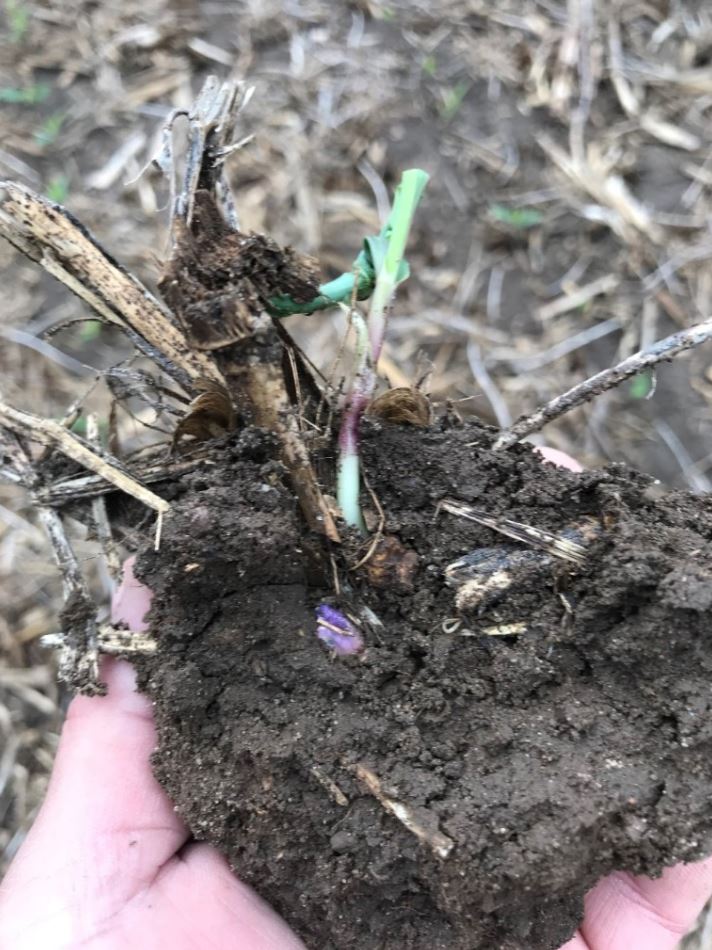August Agronomy Update
Posted on August 21, 2020

If anyone has ever followed a big stover crop with a tillage tool or a planter, you know the frustration of fodder gumming up the works. A corn crop can leave a significant amount of residue in the field that can cause an abundance of problems including a delayed germination due to a poor seedbed in spring, harboring pests and diseases over winter, and locking up valuable nutrients.
Fall-germinated weeds and crop residue can be problematic for tillage and planting alike, Figure 1. Hair-pinning residue in the seed trench during planting will provide poor seed-to-soil contact, causing moisture to be wicked away, leaving dry pockets and delaying germination. Late emergence can cause the plant to not produce an ear, resulting in lower yield due to the uneven plants robbing nutrients, water and sunlight from the productive corn crop.
Figure 1: This picture, taken in the spring of 2018 in northern Indiana, shows how residue pushed down into the seed trench at planting can retard seedling growth.
Disease and insects overwinter in crop residue and fall-germinated weeds. In the case of both disease and insect infestation a host is needed to overwinter these pests, but if we can reduce or eliminate the host, we can break the cycle of infestation. This concept describes the disease triangle, Figure 2.
Figure 2: The disease triangle shows what it takes to propagate disease. Cut one corner of the triangle out, the disease will not take hold.
The residue contains valuable nutrients that can be utilized next growing season if managed correctly. A 200-bushel corn crop will produce 4.73 tons of crop residue. According to IPNI, 4.73 tons of corn crop residue contains 134 units/ac of nitrogen, 70 units/ac of P2O5, and 50 units/ac of K2O. Considering August 2020 pricing for granular NPK fertilizer, reversing these nutrients back into the soil will provide a savings in excess of $100 per acre. Mineralizing locked up nutrients is the key that will unlock value while increasing ideal seedbed conditions next spring and decreasing the host that caters to pests.
To help growers reap the benefits of locked up nutrients and prepare a better seedbed for fall, The Andersons has launched Bio Reverse™, a new robust microbial product. Bio Reverse will increase residue decomposition and kick start the mineralization processes in the field. At the recommended rate of 1 pint/ac, Bio Reverse contains over 300 billion microorganisms, 4 bacteria strains, and 1 yeast component. These microorganisms are designed to break up the cellulose molecules and kickstart the mineralization process in the soil. Once these chains are broken apart glucose will be released and start a chain reaction, feeding additional bacteria to digest more cellulose. Bio Reverse can be applied with fall herbicides, providing a reduction in both winter annual weeds and crop residue. Contact your trusted Ag Advisor from The Andersons for rates and recommendations for spraying.
FOR MORE INFORMATION:
Please complete the form, and we’ll get you in touch with your Territory Manager from The Andersons.
©2020 The Andersons, Inc. All rights reserved. Bio Reverse is a trademark of The Andersons, Inc.




